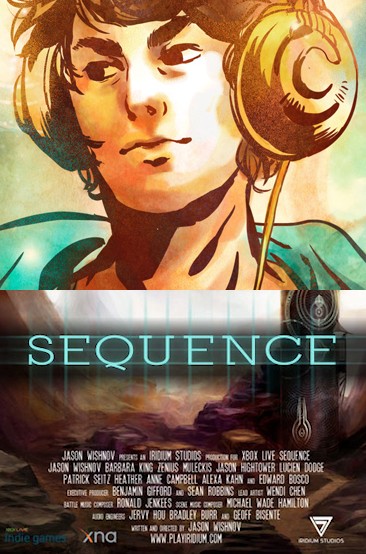Sequence Review
-
Category: ReviewsHits: 11453

Article Index
Page 1 of 3
We've seen the casual-oriented puzzle RPG genre growing at a steady rate ever since Puzzle Quest released back in 2007, with Infinite Interactive following their initial success up several times over. More recently, we took a look at the similar "poker battle" RPG, Runespell: Overture, which took the core gameplay style of Puzzle Quest and changed up the core puzzle mechanic, as well as replacing equipment, spells and creatures with cards. Now, another indie RPG in the same field takes a stab at the same type of gameplay, but with another twist. Sequence can best be described as the first in the previously non-existent rhythm RPG genre. Rather than puzzles, Sequence manages to carve out a niche for itself with addictive gameplay inspired by Dance Dance Revolution, infused with stats, equipment, and a fully-voiced story to carry it along. While the grind inherent in these sorts of games is just as prevalent as ever, the "rhythm battles" Sequence brings to the table are a lot of fun, and the originality of it all makes Sequence stand out in the crowd.
Fourth Wall? What Fourth Wall?
Sequence, for a game devoted almost solely to its core game mechanic, is actually surprisingly heavy on story and characters. Playing as Ky, a university student who has been kidnapped and trapped in a mysterious tower, presumably for testing purposes, you're aided by a friendly-yet-snarky female helper, Naia, who speaks via intercom. The initial story setup comes across as a bit forced, but as the game goes on, the characters are fleshed out a lot more than you'd expect. It's schlocky, no question, but it's the kind of schlock that still manages to make you care for its characters. The story beats and plot twists are all fairly standard and predictable, but even so I found myself interested in what would happen next.
If there's one thing that can be said of the story and writing in Sequence, it's that its author, Jason Wishnov, is pretty heavily invested into Internet culture. The game spouts a reference a minute, from 4chan, to Craigslist, to "yo dawg" jokes, and so on. Characters even talk in netspeak ("omg", "lmao", etc.) from time to time. Although it's clear the intent was to get some easy laughs from players - and admittedly, it does work from time to time - I did find myself getting a bit impatient with the constant "remember that meme from a few years ago?" shout-outs the game revels in providing.
A game like Sequence probably isn't going to have an excellent story, but considering the strength of its characters and plot relative to other entries in the genre, the forced attempts to be relevant to gaming and Internet culture can come across as more a plea for attention than genuinely funny. I appreciate the intent, but the conflict between the game's relatively self-serious storyline and the fourth-wall-breaking way in which it's almost constantly delivered hampers the effectiveness of it. It's easy to say "story in this type of game doesn't matter", but as it's one of the main hooks driving the gameplay forward, I think it's worth being critical about.
Dancing to Victory
Speaking of gameplay, it's about time I get to it. For those unfamiliar with Dance Dance Revolution, it's a popular rhythm game with arcade origins, which revolves around pressing directional arrows (up, down, left right) in time with a song. Although traditionally dance games of this nature have used mats or platforms with pressure-sensitive buttons to literally get gamers dancing, the popularity of the gameplay also led to dozens of similar games being produced for the PC and other platforms, where more traditional arrow key or directional pad button input took priority. In short: arrows come down top-to-bottom, and it's your job to hit the right buttons in sequence.
Where Sequence differentiates itself is in adapting a more traditional battle system to this type of gameplay. Rather than fighting against the clock, or going for a high score, you're trying to beat an opponent by launching your attacks and summarily defending against theirs. Instead of one playing field, Sequence provides three - one for defense, one for offense, and one for building up mana (which allows you to cast spells). Since only one field can be affected at any given time, you'll need to be able to keep an eye on all three at once and switch between them as needed. The eventual goal is to whittle down your enemy's hit points before he/she/it can do the same to you.


